Intel, the largest consumer CPU R&D company in this era, has been established for nearly 60 years. The computer CPUs they developed are widely used in all corners of the field. In the past 60 years, Intel has launched a variety of CPU models according to demand, and its naming has become increasingly complex and dazzling.
In this article, let us analyze the
evolution of Intel CPU naming rules in detail, and understand the meaning
behind CPU naming. After understanding these clearly, everyone can carefully
select CPUs according to their needs in the future.
This article has a lot of dry goods, and the article is very long. Everyone must click on the collection in time.
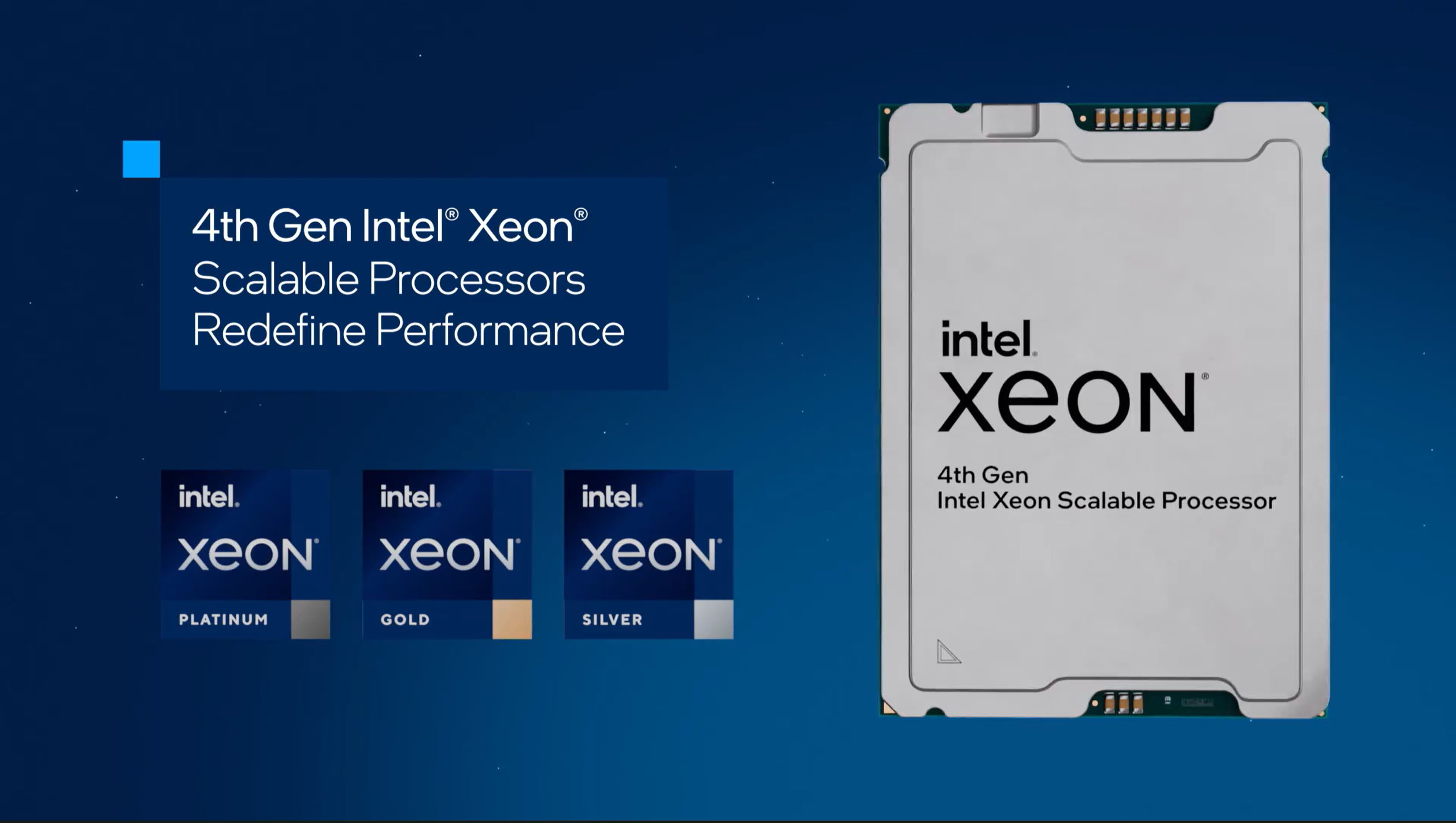 At present, Intel divides its subordinate
CPU models into Core Ultra, Core, Core N series and Intel processors (this is
the new brand name of Intels processor series, which will replace Intel
Pentium and Intel Celeron brands.
At present, Intel divides its subordinate
CPU models into Core Ultra, Core, Core N series and Intel processors (this is
the new brand name of Intels processor series, which will replace Intel
Pentium and Intel Celeron brands.
Intel processors are a new simplified brand
for affordable computing solutions launched by Intel in 2023. Starting in 2023,
these affordable computing products will use simplified brand Intel processors
instead of Intel Pentium and Intel Celeron processors. This new, simplified
brand architecture will enable Intel to focus more on the flagship brand.
In addition, the update will simplify brand
products across computer segments to strengthen and support Intel customers communication on the value proposition of each product. The new brand
architecture is also expected to serve as a brand name for multiple processor
families to provide customers with a simplified purchasing experience.
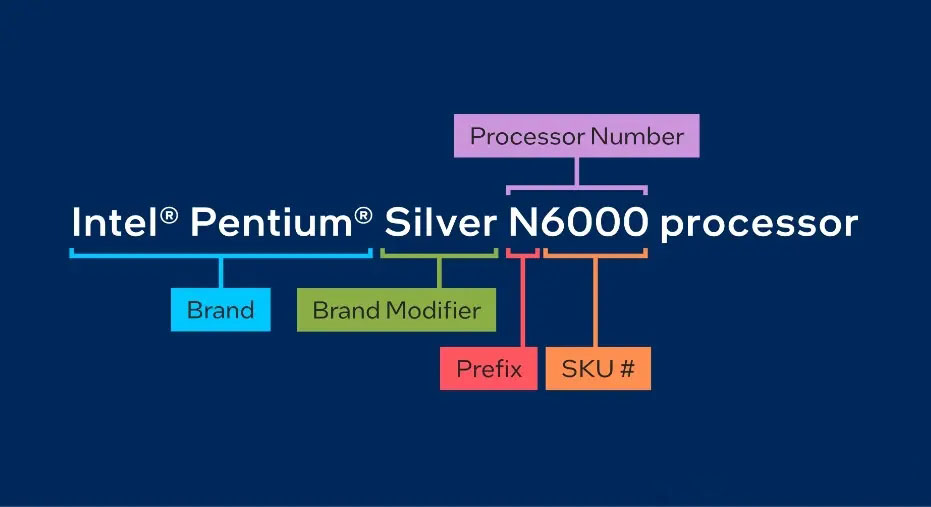
Since the Pentium and Celeron series
processors have not yet withdrawn from the market, the editor will also
introduce the naming rules of these two processors.
First, the Intel Pentium Silver processor,
taking the Intel Pentium Silver N6000 processor as an example, Intel Pentium is
the brand logo, Silver is the brand modifier, used to refer to the Silver
series of processors, and N6000 is the processor model. The larger the number,
the higher the level.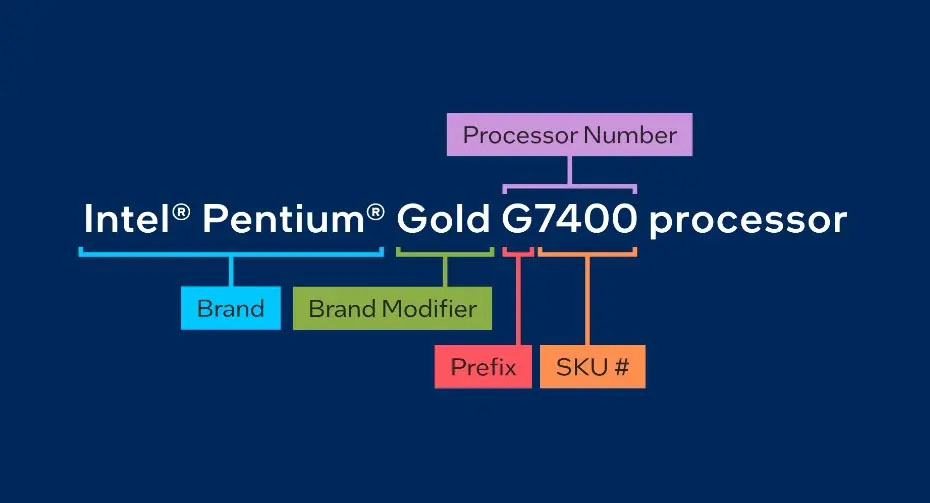
Then there is the Intel Pentium Gold
processor. Taking the Intel Pentium Gold G7400 processor as an example, Intel
Pentium is the brand logo, Gold is the brand modifier used to refer to the Gold
series of processors, and G7400 is the processor model. The larger the number,
the higher the level.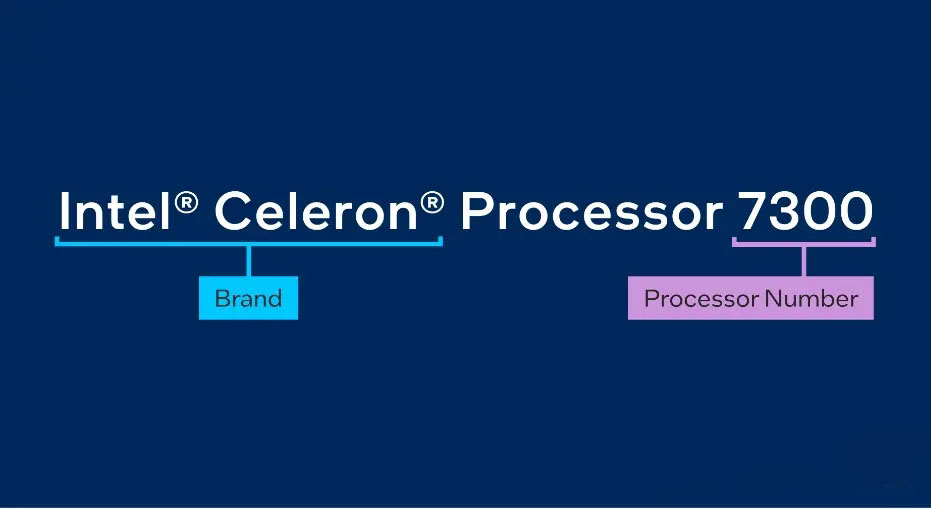 Next is the Intel Celeron processor. The
Intel Celeron processor naming rules have two different formats. Some Intel
Celeron processors may be named in one of the following formats: four digits,
prefix, or suffix.
Next is the Intel Celeron processor. The
Intel Celeron processor naming rules have two different formats. Some Intel
Celeron processors may be named in one of the following formats: four digits,
prefix, or suffix.
Taking Intel Celeron Processor 7300 and
Intel Celeron Processor N5095 as examples, Intel Celeron is the brand logo and
7300 is the processor model; the other is a combination of a letter prefix and
a four-digit number such as N5095. The larger the four-digit number, the higher
the processor model level.

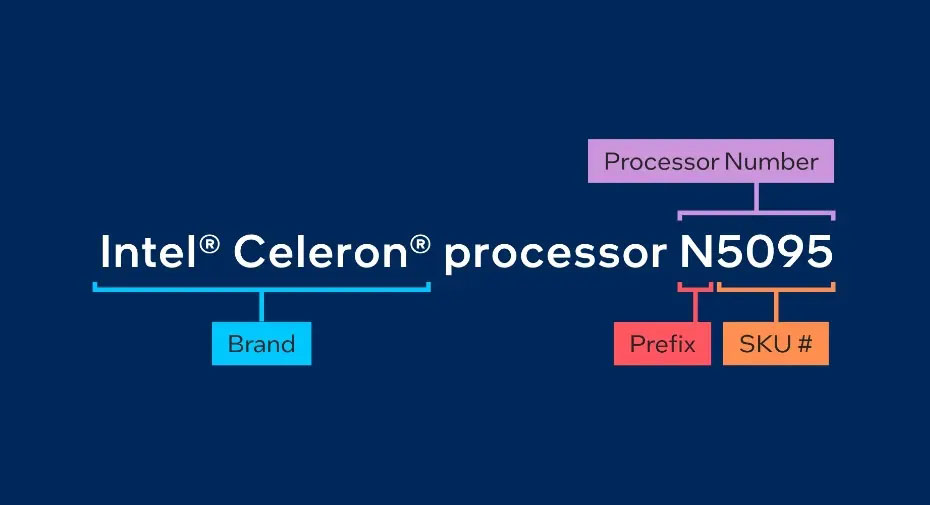 Intel Core Ultra processor is a processor
brand launched by Intel in 2023. The first generation is Meteor Lake, which is
often mentioned by everyone. Ultra processors have upgraded the new Intel 4
manufacturing process, split modular architecture, and new CPU/GPU
architecture. The Intel Core Ultra processor family includes Intel Core Ultra
9, Ultra 7, and Ultra 5 processors.
Intel Core Ultra processor is a processor
brand launched by Intel in 2023. The first generation is Meteor Lake, which is
often mentioned by everyone. Ultra processors have upgraded the new Intel 4
manufacturing process, split modular architecture, and new CPU/GPU
architecture. The Intel Core Ultra processor family includes Intel Core Ultra
9, Ultra 7, and Ultra 5 processors.Taking the Intel Core Ultra 9 processor
185H processor as an example, Intel Core Ultra is the brand logo, 9 represents
the brand level, and there are currently three levels: 5, 7, and 9. 185H is the
processor model, of which 1 is the series level. It is currently the first
generation, so it is 1. The number will increase as the generation is upgraded;
85 is the SKU value, and H is the product line suffix. The specific suffix
letters represent what they mean. The editor will explain in detail later.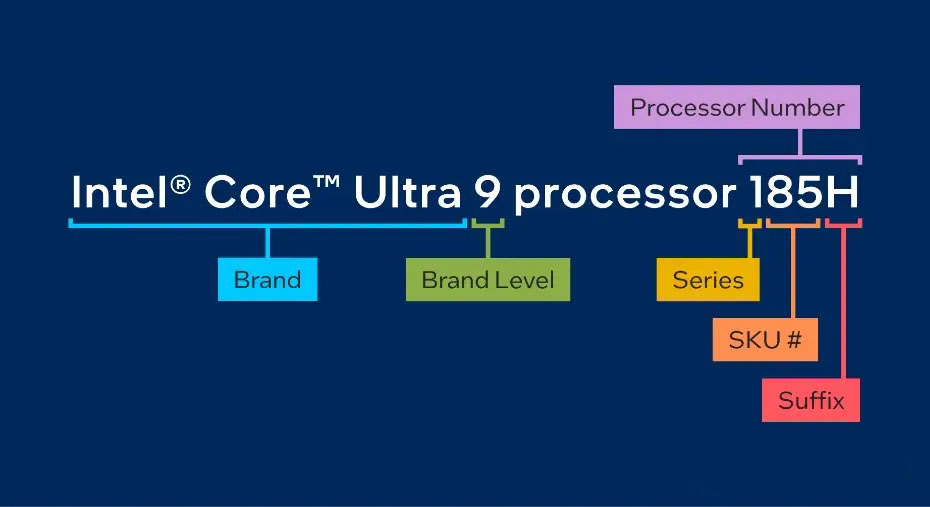 Intel Core series processors are Intels
main shipments. Almost all computers are equipped with Core series CPUs. Core
series processors basically cover a variety of application scenarios such as
desktop, mobile, and embedded, and are Intels most widely used series of CPUs.
Intel Core series processors are Intels
main shipments. Almost all computers are equipped with Core series CPUs. Core
series processors basically cover a variety of application scenarios such as
desktop, mobile, and embedded, and are Intels most widely used series of CPUs.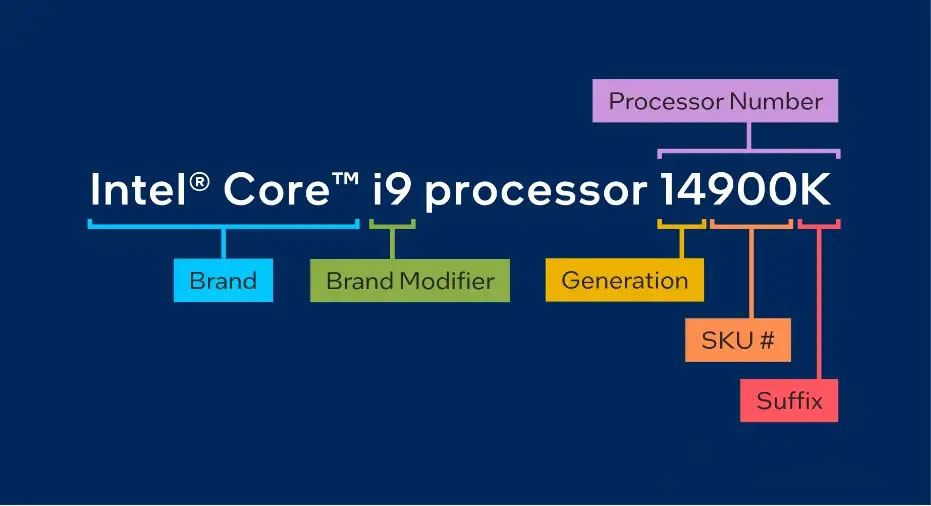 Take the Intel Core i9 processor 14900K as
an example. Intel® Core is the brand identifier and i9 is the brand modifier.
Currently, the brand modifiers of the Intel® Core™ processor series include i3, i5, i7 and i9. The larger the brand modifier
number, the higher the performance level provided.
Take the Intel Core i9 processor 14900K as
an example. Intel® Core is the brand identifier and i9 is the brand modifier.
Currently, the brand modifiers of the Intel® Core™ processor series include i3, i5, i7 and i9. The larger the brand modifier
number, the higher the performance level provided.
14th generation refers to the
sub-indicator. The generation of the processor is identified in most Core
processor numbers, and the generation is listed after the dash. When the
processor has four or five digits, the first one or two digits indicate the generation.
For example, the 14900 processor is the 14th generation processor.
900 represents the SKU value. SKUs are
usually assigned according to the development order of processors in the
generation and product line. Under the premise that the rest of the processor
brand and generation are exactly the same, a higher SKU generally means more
features.
K represents the product line suffix. The
SKU suffix is another key indicator of the processors features. It is represented
by the letter-based product line suffix. The following editor will introduce
the meaning of the SKU suffix in detail.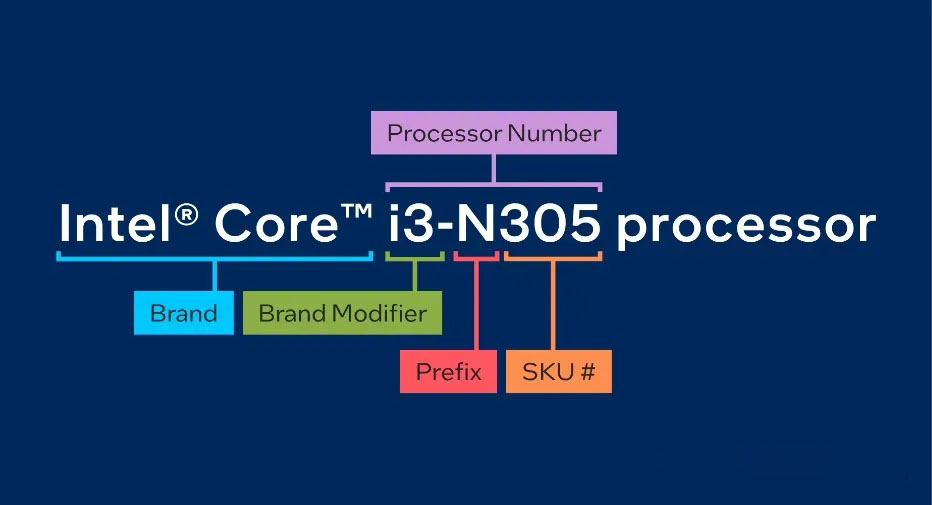 Intel is adding new Intel® Core™ i3 processors to the N series to boost performance in the
entry-level computing space for laptops and desktops. The Intel® Core™ i3 N series processors use a simpler processor numbering format
that is different from the U, P, H, S, etc. series.
Intel is adding new Intel® Core™ i3 processors to the N series to boost performance in the
entry-level computing space for laptops and desktops. The Intel® Core™ i3 N series processors use a simpler processor numbering format
that is different from the U, P, H, S, etc. series.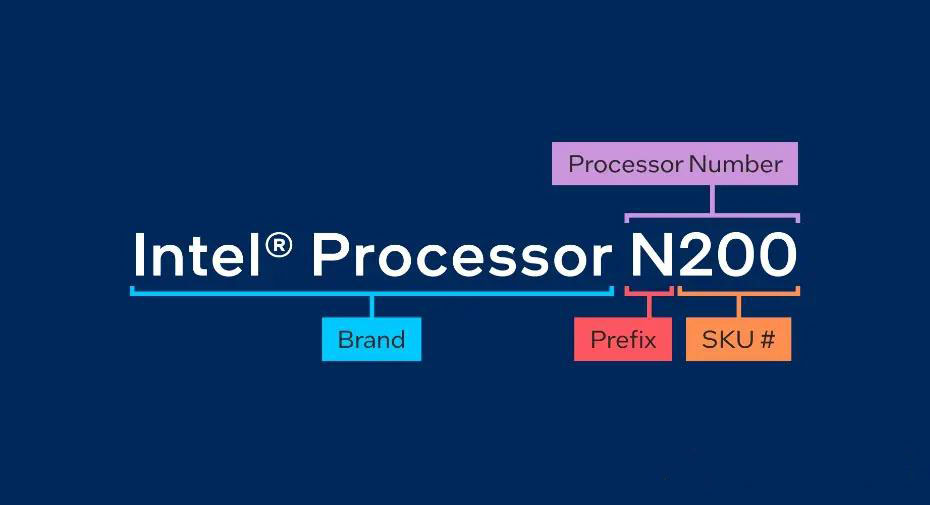
Taking the Intel Core i3-N305 processor as an example, Intel Core is the brand logo, i3 is the brand level, and N is the model prefix. The Intel® Core™ i3 N series processor follows the current N series naming convention and does not contain any generation indicator in digital format.
Intel processors will add a variety of letter suffixes. The editor has specially made a table for everyone. To understand the meaning of the processor suffix, please refer to the list below. Not all processor generations or families contain all product suffixes, but the meaning of these suffixes basically applies to all processor models.

















































































